
The $25 million Hamilton Avenue Asphalt Plant reconstruction project was initiated by the New York City DOT and built by the New York City Department of Design and Construction to replace the plant’s aging equipment. ATANE, as CM/design-builder, managed, supervised, coordinated and inspected all design and construction work throughout all phases.
In addition to dismantling and replacing the existing plant equipment, the project involved the requisite plumbing, electrical and structural work. The plant’s proximity to the Gowanus Canal—a Superfund site—and the heavily traveled Hamilton Avenue required special provisions for debris removal, MPT, geotechnical engineering and environmental permitting. A new stormwater pollution prevention plan and a drainage design conformed to FEMA’s post-Sandy flood maps for the area and minimized impact to the canal.
The project received the 2014 ACEC New York Diamond Award as well as other accolades.

In October 2012, flooding/storm surge and winds from Superstorm Sandy impacted rail infrastructure throughout the Metro-North Railroad right-of-way. Power components were damaged or had their useful life reduced due to salt water intrusion. To restore the system to a state of good repair and safeguard against future stormwater damage, ATANE is providing construction supervision/inspection for more than $200 million of design-build construction of power/communications and signaling infrastructure improvements.
The five-year project will replace 30 miles of damaged power components and communication/signal cable plants on the heavily traveled electrified Hudson Line. MNR is replacing and raising three damaged traction power substations at Riverdale, Tarrytown and Croton-Harmon on the Hudson Line and one on the Harlem Line at Brewster.

Queensbridge Houses is divided into north and south sections that each encompass 13, six-story buildings for a total of 3,142 apartments. ATANE provided CM/build services for a $14 million boiler replacement project, which required the removal of six boiler plants and the installation of 18 new boilers and controls inside all buildings, including the community center.
We coordinated the early procurement and delivery of the new boilers and related equipment in multiple locations concurrently, thereby reducing time needed to provide, operate, and maintain temporary mobile steam boilers. We also managed the decommissioning of the existing boiler plants and a thorough hazardous abatement remediation process that provided for the safe removal of the old boilers and installation of the new ones. The large housing complex remained fully occupied throughout, and tenants were never without heat or hot water.
The project received an ACEC New York Gold Award.

ATANE is supporting the Governor’s Office of Storm Recovery (GOSR) of the Housing Trust Fund Corporation in the oversight and coordination of program and construction management, serving as owner’s representative across a variety of projects and programs from pre-construction through closeout. The projects are aimed at the long-term recovery of communities impacted by Superstorm Sandy, Hurricane Irene, and Tropical Storm Lee.
Typical assignments include constructability review, value engineering analysis, bid preparation, cost estimates, management of field work, scheduling, and QA/QC. One project out of GOSR’s Mineola office, for example, involved logistical support to homeowners, including coordination with design professionals, to assemble documents necessary for execution of home repairs/elevation construction.
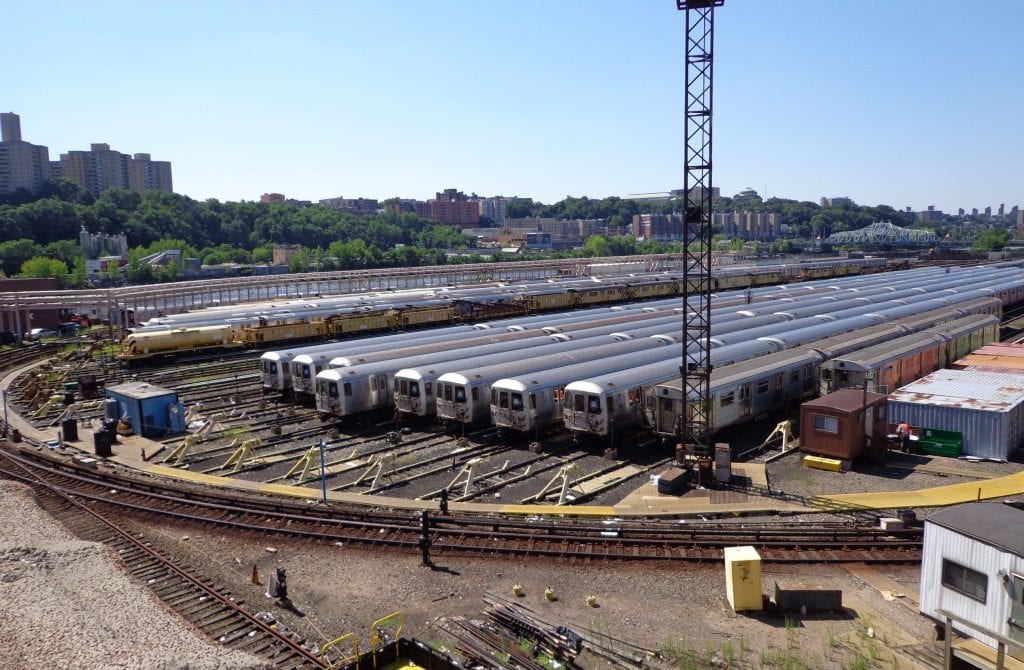
ATANE is providing ongoing construction management/inspection services for Superstorm Sandy-related repair and resiliency projects as well as miscellaneous construction projects to protect vulnerable NYCT assets from future storms and flooding. The five-year contract has an estimated construction value of $58.3 million.
Major projects under this “fix and fortify” contract include right-of-way (tracks, signals, substations, communication/power equipment); station and tunnel protection; and shops, yards and depots.
As NYCT’s representative, ATANE is responsible for delivering all projects on schedule and within budget. The designated project manager/resident engineer is responsible for management of day-to-day field activities assisted by project control personnel and inspectors and specialized service staff, when needed.

The District of Columbia Water and Sewer Authority initiated its $2.6 billion plan to control combined sewer overflows (CSOs), known as the DC Clean Rivers Project (DCCR), in 2012. The DCCR utilizes a system of deep tunnels to capture CSOs and convey them to the Blue Plains Advanced Wastewater Treatment Plant before being discharged to the Potomac River.
The Anacostia River Tunnel, the second tunnel of the system, will convey CSOs along the Anacostia River in SE Washington, DC, reducing CSOs to the Anacostia River by 98%. ATANE, as a member of the consultant construction management team, inspected the $253 million design-build project, including construction of a 12,255-foot-long bored tunnel to a depth of 100 feet.
The project received the Sustainability Initiative of the Year Award from the International Tunnelling and Underground Space Association.
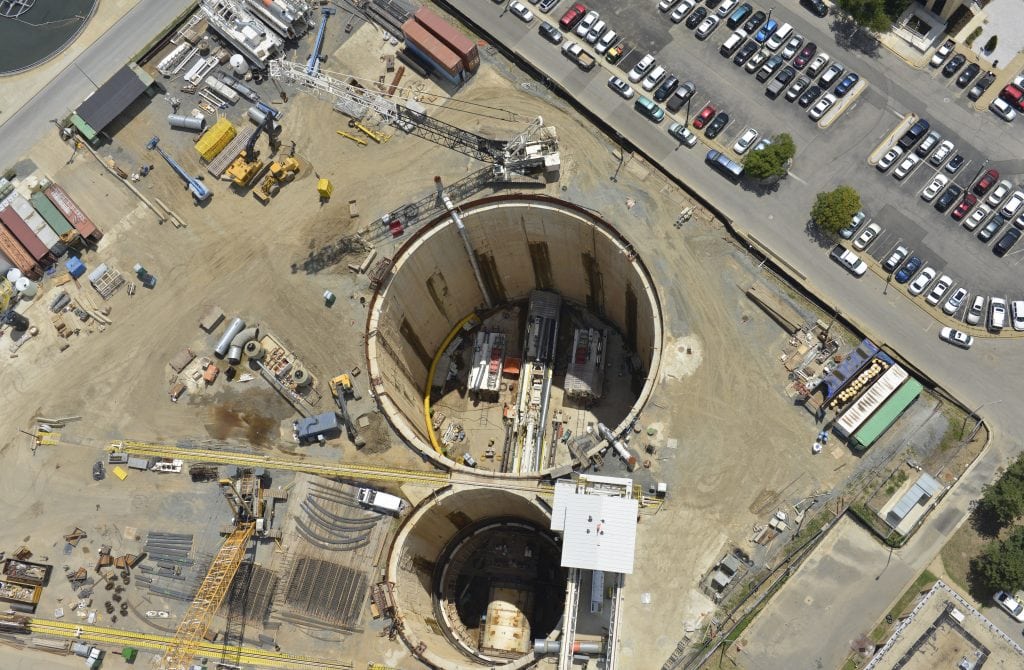
The District of Columbia Water and Sewer Authority (DC Water) initiated its $2.6 billion plan to control combined sewer overflows (CSOs), known as the DC Clean Rivers Project (DCCR), in 2012. The DCCR utilizes a system of deep tunnels to capture CSOs and convey them to the Blue Plains Advanced Wastewater Treatment Plant before being discharged to the Potomac River. The Blue Plains Tunnel is a 120-foot-deep, 24,300-foot-long segment of the system, running under and adjacent to the Potomac and Anacostia Rivers.
ATANE, as a member of the owner’s representative/consultant construction management team, inspected the $319 million design-build project.
The project, built $11 million under budget, received numerous accolades, including the 2013 Technical Innovation of the Year Award for shaft design and construction from the International Tunnelling and Underground Space Association.

ATANE provided REI for the reconstruction of Broadway from Ann to Rector Streets, an NYCDDC-managed $51 million project on behalf of the NYCDEP and utility operators. The project replaced and upgraded water mains; rehabilitated sewers; replaced curbs, sidewalks, fire alarms, street lights, and traffic signals; restored the roadway; removed trolley tracks; and provided tree mitigation.
Abandoned facilities were removed to create space in the congested road bed. Granite curbs and pigmented sidewalks were replicated due to the area’s landmark status. Access to businesses and subway entrances was accomplished by strictly enforcing the MPT plan and using flag persons and traffic enforcement agents 24/7 to safely direct the high volume of pedestrian and vehicular traffic around the construction zone. Other challenges included installing necessary utility facilities with the subway directly under Broadway.

ATANE provided construction management services to the New York City Department of Environmental Protection (NYCDEP) for a $25 million project to connect the Catskill and Delaware Aqueducts, which carry about 1 billion gallons of water per day to New York City from six reservoirs in the Catskills. The interconnection was part of the NYCDEP’s Water for the Future Program, which aims to provide clean, safe and reliable water.
Connecting the two aqueducts allows up to 365 million gallons of water per day to be moved from the Delaware to the Catskill Aqueduct; enables NYCDEP to reduce water usage from the Catskill Aqueduct during periods of high turbidity caused by heavy rainstorms; and helps maintain a supply of high-quality water without filtration.

The East Coast Greenway is a planned 2,900-mile multi-use trail which, when completed, will link Calais, Maine, at the Canadian border, with Key West, Florida and entail approximately 200 miles through Connecticut. The Town of East Hartford constructed a new 2-mile, 10-foot-wide bituminous concrete multi-use trail as part of the East Coast Greenway undertaking.
ATANE provided construction inspection and material testing services for two segments of the trail. Inspectors ensured that it was constructed in strict accordance with all contract documents and were responsible for maintenance and protection of traffic.
Construction work included installation of fencing, accessibility ramps, a concrete barrier wall, a concrete retaining wall along a wetlands area, realignment/reconstruction of a major intersection/off ramp from Route 2, signage and pavement markings.
The $2.8 million project received a 2018 ACEC New York Gold Award.

Originally constructed in 1927, the Gilboa Dam consists of a massive 155-foot-high by 1,326-foot-long stair-stepped spillway constructed with a masonry façade of mortared quarried stone blocks. The New York City Department of Environmental Protection initiated an approximately $400 million reconstruction project, with an ATANE-led joint venture providing construction management.
The $140 million dam reconstruction phase was completed two years ahead of schedule despite $18 million in damage and an 8-month delay caused by Hurricane Irene. It added up to 12 feet of mass concrete to the face of the dam and required approximately 120,000 cubic yards of concrete.
Industry recognition included the 2015 ACEC New York Gold Award and the 2014 CIB New York Award of Merit.
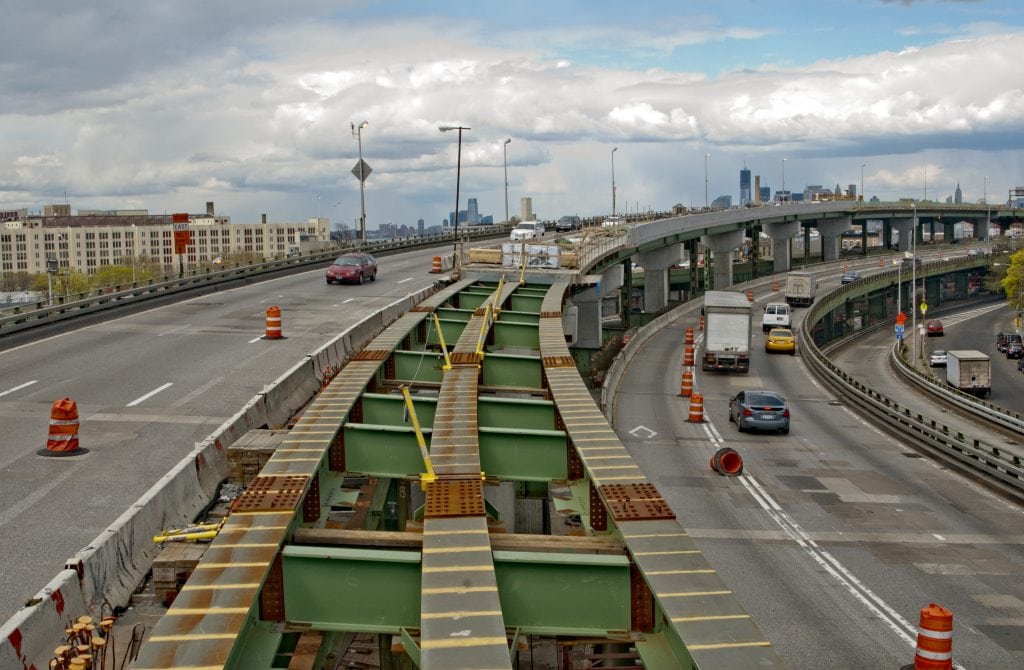
The Gowanus Expressway, a critical component of New York City’s highway system, connects the Verrazano-Narrows Bridge to the Hugh L. Carey Tunnel. The New York State DOT’s $214 million rehabilitation project provided for the replacement of its deteriorated deck from the Shore Parkway Interchange to 6th Avenue.
an ATANE-led joint venture inspected construction, which featured a new 16-foot-wide, 2,300-foot-long slip ramp (flyover) in the Gowanus median between 58th Street and 4th Avenue to carry the HOV lane, viaduct deck replacement from 6th Avenue to 51st Street, steel repairs of the superstructure, and widening of the at-grade Gowanus from 92nd Street to 6th Avenue. The flyover enabled traffic to be maintained on the highway throughout construction, and an innovative concrete mix designed for fast strength gain greatly minimized inconvenience to motorists.
The project received the 2016 ACEC New York Diamond Award.
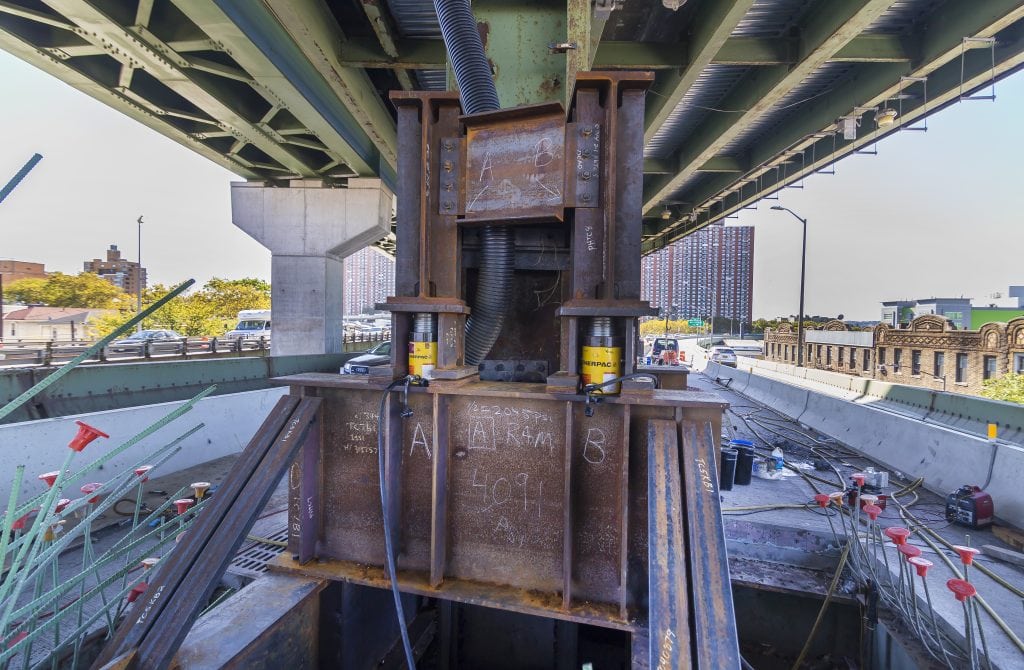
Our most recent assignment on the Gowanus Expressway involves construction inspection services to the New York State Department of Transportation for steel repairs to viaduct bridges on the Gowanus and operation of the HOV lane between the Hugh L. Carey Tunnel and the Verrazano-Narrows Bridge. This viaduct carries the Gowanus over Hamilton Avenue, 65th Street and Third Avenue. The bridges carry the expressway over local streets and local streets over the expressway.
The $114 million project also involves painting of new steel members and steel repairs. Major emergency repairs encompass the structural steel and repair/replacement of bearings; operation of the HOV lane on both the Gowanus and Prospect Expressways; replacement of overhead sign structures on the Gowanus Expressway; and joint resealing throughout the length of the Gowanus.
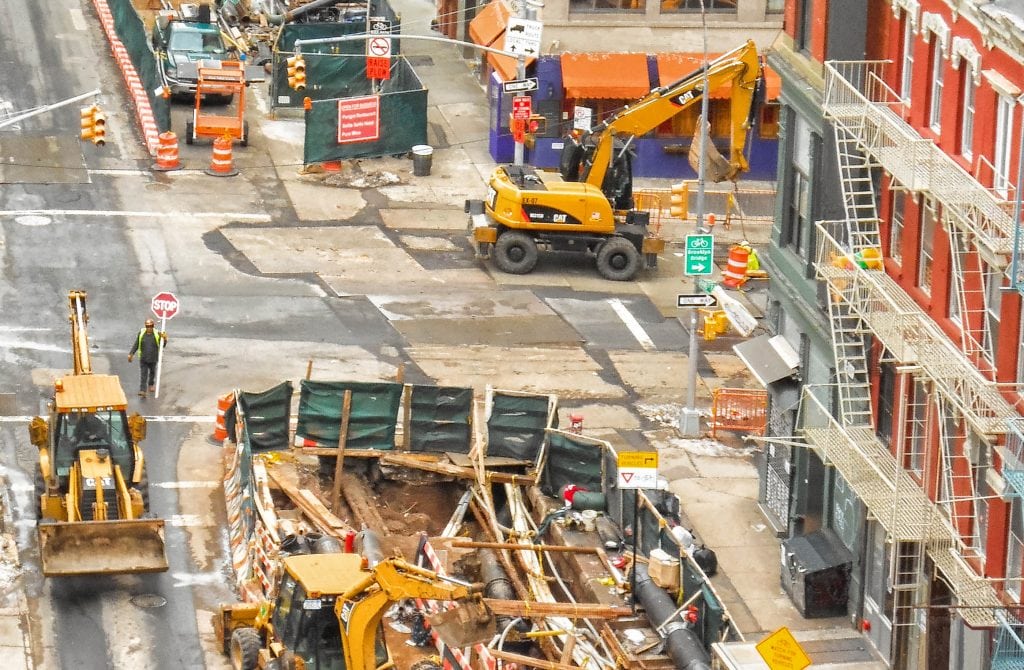
ATANE led an REI joint venture for this critical reconstruction project completed six months ahead of schedule and $26 million under budget. The $40 million reconstruction of water mains and utility infrastructure along Grand Street from Broadway to Essex included connection to Shaft 30B of City Water Tunnel No. 3.
The complex project was performed in proximity to active subways; non-functioning water main valves; underground building vaults; a high density of secondary electrical and communication lines (many undocumented); and abandoned, heavily reinforced trolley track foundations. Additional challenges included the need to coordinate and communicate with diverse neighborhoods; shut water supply to over 30 restaurants simultaneously; and schedule work around numerous neighborhood events.
The project received a 2018 ACEC New York Platinum Award and 2017 CMAA Metro New York/New Jersey Project of the Year Award.
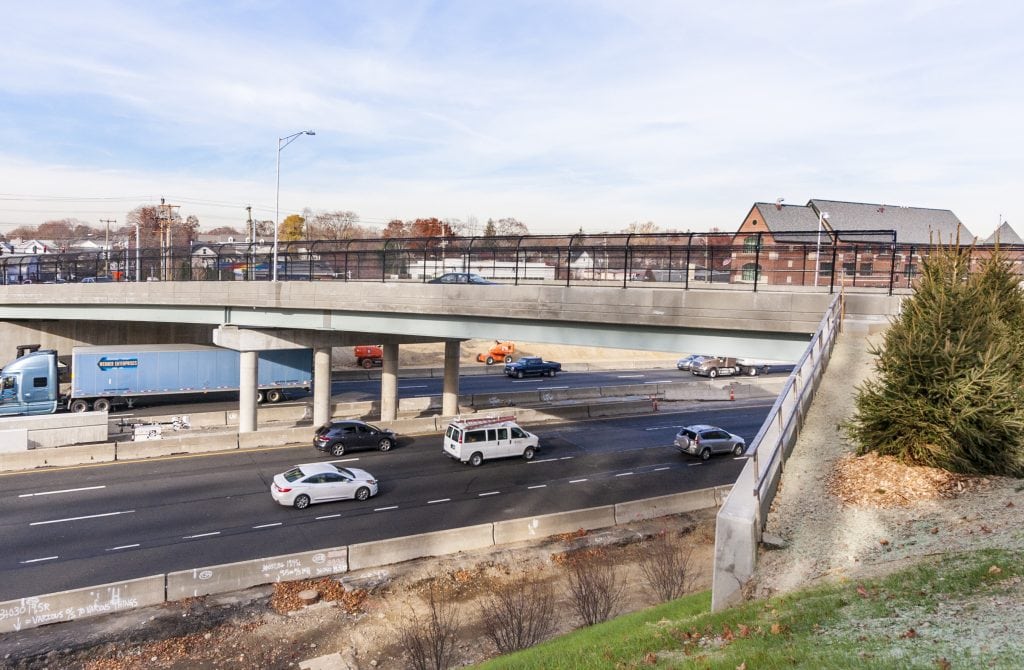
I-95 is an economic lifeline across southern Connecticut that carries commuters, tourists, and truck-hauled freight. Before the Connecticut Department of Transportation initiated a $42.3 million project to widen the busy interstate, it experienced heavy vehicular traffic during peak hours. ATANE provided construction engineering and inspection services for the essential improvement that eliminated gridlock and increased storage on ramps.
The reconstruction extended and added deceleration lanes, reconfigured the southbound Exit 14 Interchange, and widened exiting ramps at Interchanges 14 and 15 on I-95 to improve access to U.S. Route 1 and the interstate. Additional improvements along I-95 included median highway illumination, additional overhead signing, reconstructed overpass bridges to span the new highway width, and substantial drainage improvements.
The project received the 2016 ACEC New York Platinum Award.

The New Haven Main Line is one of the nation’s busiest commuter rail systems. ATANE provided construction engineering and inspection services for the $85 million replacement of 7 miles of overhead wire system (OWS) on the four-track system between Fairfield and Bridgeport. The new constant tension system with balance weights eliminates sagging and maintains proper tension, which were the main causes of deterioration in the fixed-tension OWS.
Challenges included operating machinery with limited headroom while trains passed the work zone at up to 70 miles per hour. The catenary replacement involved a careful interweaving of interim and permanent traction power and overhead catenary system configurations to keep the railroad operational throughout construction. The successful project led to a contract for the next section of catenary replacement on two busy sections of the New Haven Line from South Norwalk to Southport and Bridgeport to Stratford.

Water Tunnel No. 3, under construction since 1970, is one of the largest construction projects in New York City’s history, and one of three tunnels connecting the city to its water supply in upstate New York. The New York City Department of Environmental Protection (NYCDEP) initiated the $4.7 billion construction of Tunnel No. 3 to provide critical redundancy and enable the city to repair Tunnels 1 and 2 for the first time since they were put into service in 1917 and 1936, respectively.
In October 2013, concerns about the condition of the city’s aging water tunnels were alleviated with activation of the final 8.5-mile Manhattan leg of Tunnel No. 3. ATANE, in joint venture, provided construction management services to the NYCDEP for the $203 million complex engineering project. The finishing work included installing mechanical, lighting, and controls in each shaft.
Water Tunnel No. 3 utilizes state-of-the-art tunnel technology to ensure that New York City’s 9 million residents have a safe, reliable water supply.
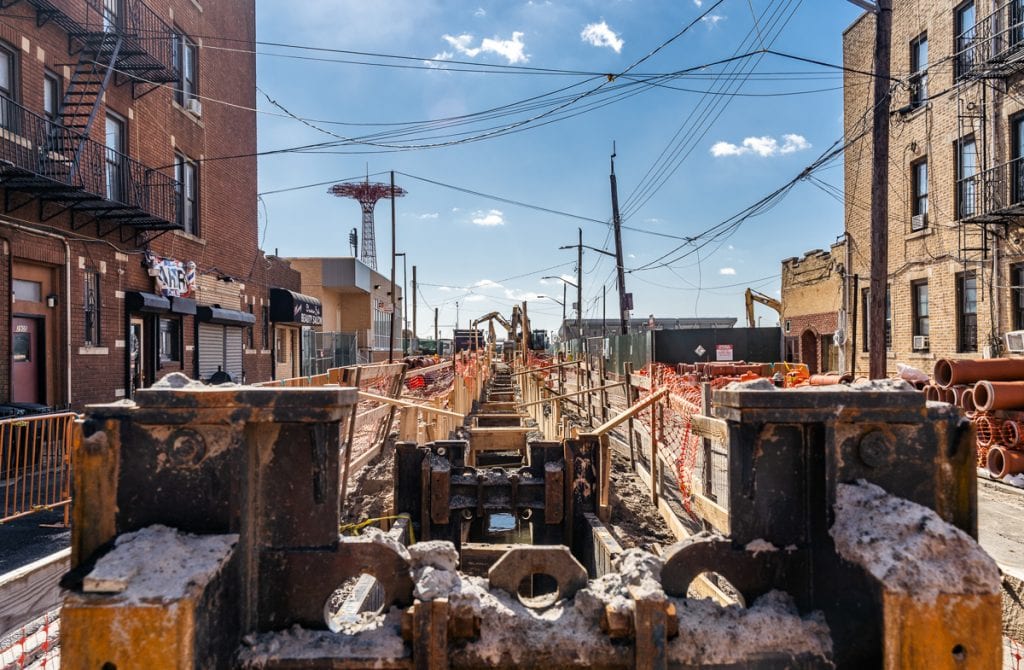
The NYCEDC aims to make Coney Island more than an amusement park and entertainment center—the city’s comprehensive plan is to reinvigorate this famous destination while bringing much-needed housing, retail, amenities and career opportunities to the larger neighborhood.
To help meet this ambitious objective, ATANE is providing construction management services for a $150 million infrastructure improvement project to include new curbs and sidewalks; mapping and construction of two new city streets, Ocean Way and Parachute Way; raising existing streets as part of the resiliency for the area and to provide cover for new storm sewer facilities; installation of street lights, traffic signals and signage; and installation of public art at the Brooklyn Cyclones Stadium transition area.

This $191 million rehabilitation project reversed 60 years of deterioration and expanded the capacity of existing structures, roadways and facilities for an intermodal transportation hub serving 70,000 daily commuters. ATANE provided REI for the design-build reconstruction of the terminal ramps for the New York City DOT.
The award-winning project encompassed the reconstruction and rehabilitation of eight vehicular ramps consisting of 73 spans and a pedestrian breezeway above the Staten Island Railway station, terminal buildings and parking areas. A major project element was demolition and reconstruction of the nine-span, 540-foot north ramp access to the north municipal parking field and the Richmond County Bank Ballpark and parking lot.
ATANE worked closely with NYCDOT, the design-builder and facility management to ensure uninterrupted maintenance of terminal operations, revenue collection and traffic flow.

The Claremont Parkway Bridge over Metro-North Railroad was built in 1889 and reconstructed in 1938. In 2011, NYCDOT initiated a reconstruction project for the total replacement of the bridge superstructure.
The $10.7 million project involved the removal of the entire superstructure and its approaches and replacement with a new single-span bridge consisting of prestressed concrete box beams supporting a reinforced concrete deck and approach slab along with modified abutments to accommodate a safer bridge profile. The two-year project was constructed in four stages so that one lane of traffic in each direction remained open.
ATANE provided resident engineering inspection services including pre-construction (constructability review and biddability), construction and post-construction and material testing and inspection services.
The Claremont Parkway Bridge received a 2015 ACEC New York Gold Award for Engineering Excellence.

Flooding from Superstorm Sandy caused irreparable damage to the interlocking area of the St. George Terminal on the northernmost end of the Staten Island Railway.
ATANE was a vital member of the construction management team providing services to New York City Transit to restore critical signal systems; install new ballast and track and a new traction power system; and perform drainage and site work. The $100 million modernization/replacement project included a new, more versatile diamond cross-over switch in conjunction with a modified track layout.
ATANE ensured conformance to Sandy audit requirements; utilized Constructware as a project management tool; oversaw monitoring of noise, vibration, air and water quality; and coordinated material testing.
Market
Transportation and Infrastructure: Mass Transit and Railroads
Service
Construction Inspection/Resident Engineering: Mass Transit and Railroads
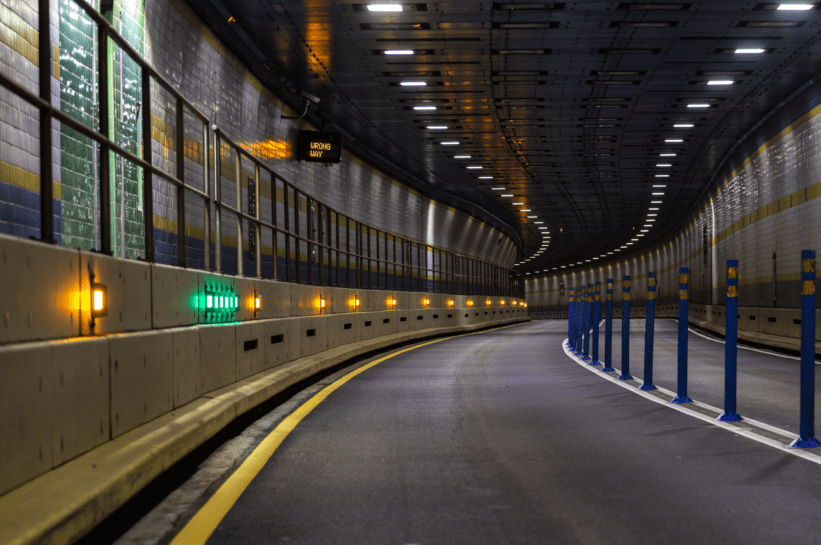
The Hugh L. Carey Tunnel crosses under the East River, connecting Manhattan and Brooklyn via 18,235-foot-long twin tubes, making it the longest continuous underwater vehicular tunnel in North America. In 2012, Superstorm Sandy battered the tunnel, filling it with millions of gallons of floodwater. As part of its long-term plan to cope with extreme weather conditions, and to guarantee a reliable transportation system, MTA Bridges and Tunnels is restoring and rehabilitating the tunnel and Brooklyn plaza.
ATANE is providing a wide range of construction management services for this massive $350 million, six-year project to ensure that critical systems are maintained and that tunnel operations are performed safely and without interruption during the operation.

ATANE provided construction management and inspection services to MTA Bridges and Tunnels for switchgear and power distribution system replacements at the Hugh L. Carey Tunnel. The $40 million project involved electric switchgear and power distribution for four tunnel blower/vent buildings—Manhattan Blower Building, Governors Island Blower Building, Brooklyn Blower Building, and Manhattan Underground Exhaust Building. The project did not interrupt occupant activities or tunnel control systems.
ATANE conducted a preconstruction investigation survey and drafted a constructability report based on that survey, highlighting significant deterioration or other irregularities not previously addressed in the design documents. We used an integrated approach to work with MTA Bridges and Tunnels, representing its interests in the project’s execution and meeting all established goals for schedule, quality, and budget.
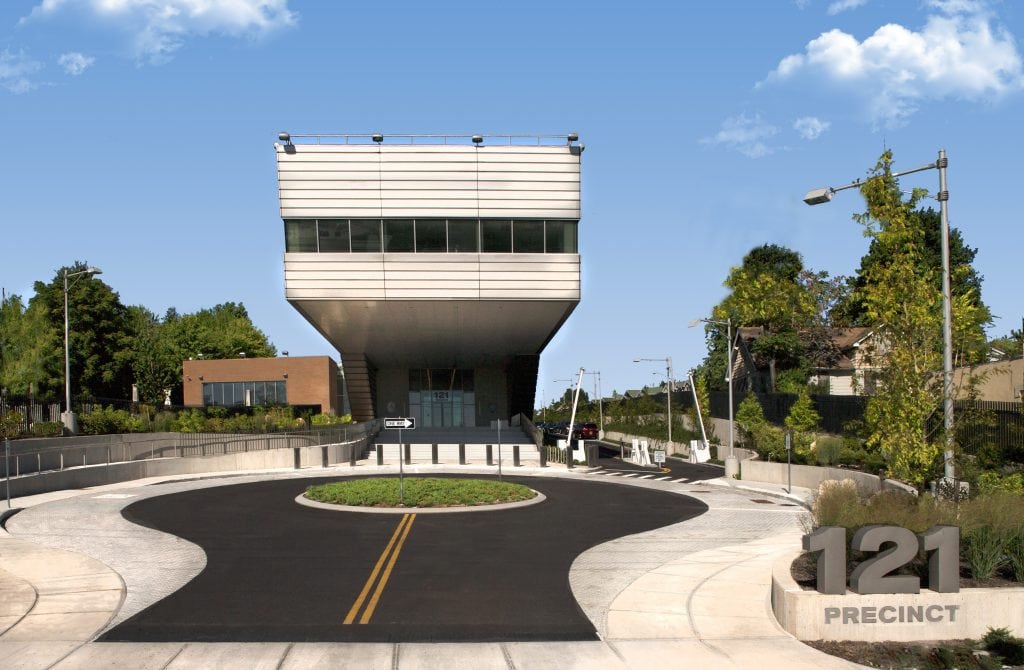
ATANE, in joint venture, provided CM/build services for this state-of-the-art police station house, Staten Island’s first new precinct in 50 years. The $55 million, 50,000-square-foot structure responds to the challenges of an irregular site with a two-story stainless-steel structure and a one-story brick structure. The two-story structure features a 95-foot cantilever that symbolically reaches out to the community.
The Precinct, which opened on July 1, 2013, is the city’s first environmentally friendly station house and achieved LEED Silver certification. The stormwater system uses vegetative swells as sediment removers to reduce the release rate and prevent sewer system flooding. Five bioretention cells capture rainwater and reduce the amount of water entering the sewer system. Industry recognition includes the 2014 ACEC New York Platinum Award.

Queensbridge Houses is divided into north and south sections that each encompass 13, six-story buildings for a total of 3,142 apartments. ATANE provided CM/build services for a $14 million boiler replacement project, which required the removal of six boiler plants and the installation of 18 new boilers and controls inside all buildings, including the community center.
We coordinated the early procurement and delivery of the new boilers and related equipment in multiple locations concurrently, thereby reducing time needed to provide, operate, and maintain temporary mobile steam boilers. We also managed the decommissioning of the existing boiler plants and a thorough hazardous abatement remediation process that provided for the safe removal of the old boilers and installation of the new ones. The large housing complex remained fully occupied throughout, and tenants were never without heat or hot water.
The project received an ACEC New York Gold Award.

The $25 million Hamilton Avenue Asphalt Plant reconstruction project was initiated by the New York City DOT and built by the New York City Department of Design and Construction to replace the plant’s aging equipment. ATANE, as CM/design-builder, managed, supervised, coordinated and inspected all design and construction work throughout all phases.
In addition to dismantling and replacing the existing plant equipment, the project involved the requisite plumbing, electrical and structural work. The plant’s proximity to the Gowanus Canal—a Superfund site—and the heavily traveled Hamilton Avenue required special provisions for debris removal, MPT, geotechnical engineering and environmental permitting. A new stormwater pollution prevention plan and a drainage design conformed to FEMA’s post-Sandy flood maps for the area and minimized impact to the canal.
The project received the 2014 ACEC New York Diamond Award as well as other accolades.
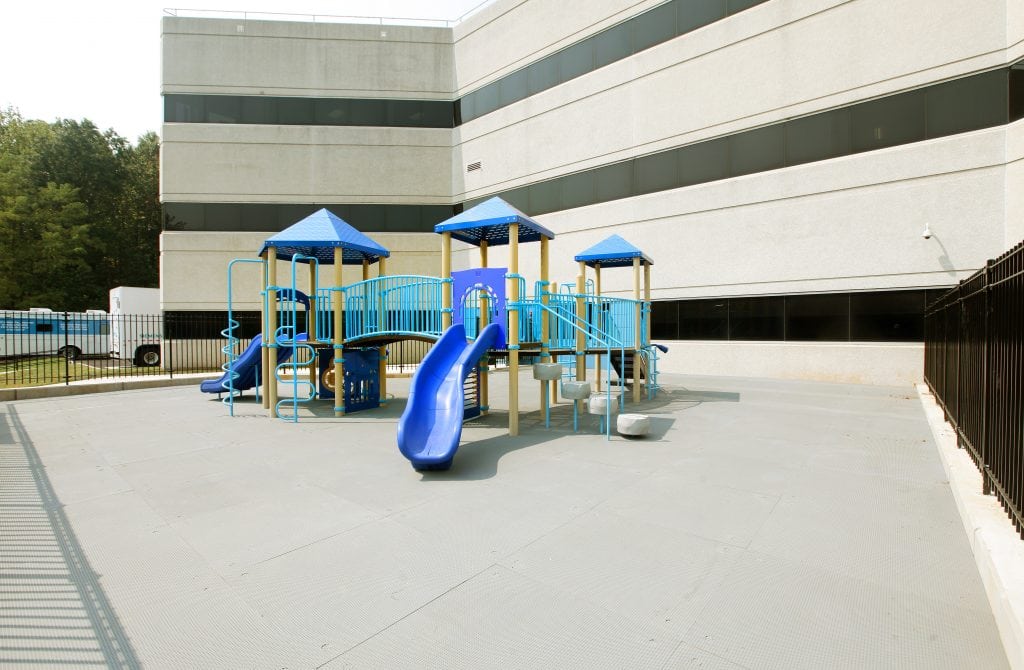
New York City’s Pre-K for All enables city families to enroll in free, high-quality pre-K programs, ensuring all children have access to a safe, vibrant learning environment.
The New York City School Construction Authority, through an executed lease agreement, constructed a 17,000-square-foot Pre-K space for 144 full-day students in a building in the Bloomfield area of Staten Island. Under an emergency response CM/build contract, ATANE provided staffing and consulting services for the $11 million project, which was completed within 8 months so the facility could open for the Fall school year. In addition to supervising construction and coordinating special inspections, ATANE developed and executed security protocols that monitored the arrival of all new personnel and visitors to the site.

ATANE is providing architectural and MEP design services to the NYC School Construction Authority for school-based health clinics across the city as part of its ongoing capital improvement program. This effort includes more than $11 million of interior renovations, system replacements, and reconfiguration of high school building spaces.
ATANE has designed five state-of-the-art clinics—complex and comprehensive facilities conscious of physical adjacencies and the flow between spaces. Examination rooms provide young adult patients with comfort and privacy, color schemes promote tranquility, and counseling offices are inviting. Schools participating in this project include Christopher Columbus H.S. in the Bronx; Port Richmond H.S. in Staten Island; New Design High School at Seward Park Educational Campus in Manhattan; and John Adams H.S. and Newton H.S. in Queens. To maintain safety, work is being performed during summer recess and after normal school hours during the academic year.

The $10.3 million police precinct house in Baldwin is dedicated to “the brave men and women of the Nassau County Police Department, past, present and future.” As construction manager, ATANE oversaw the many complex and highly technical issues required to deliver the building to the full satisfaction of the Nassau County Department of Public Works and the Nassau County Police Department.
The 25,000-square-foot station house was designed for safety and security by separating crime suspects from the public. The design incorporated sustainable initiatives, including energy efficiency, durability and environmental quality without impacting the cost of construction. Building information modeling offered multi-dimensional design capabilities. The use of pre-cast concrete wall panels and floor planks enabled quick and cost-effective erection of the structure. The use of exterior brick-formed wall panels provided a finished exterior façade while greatly reducing construction time and cost.

The $13.2 million NJ State Police Troop “D” Bloomfield Station is the first police facility to be completed under the New Jersey Turnpike Authority’s five-year, $500 million Facilities Improvement Program. The 27,500-square-foot complex includes the latest security and communications systems and became a model for applying comprehensive green building standards to all New Jersey Turnpike facilities.
The building envelope was optimized to reduce heat gain; high-performance glazing reflects more than 60% of potential solar heat gain while allowing 85% light transmission; the roof coating is highly reflective. For the building’s structural system, concrete was chosen for its local availability, stability, fire resistance, and durability. Brick was selected as the primary exterior finish to incorporate the aesthetics of the picturesque Garden State Parkway and reduce additional solar heat gain.
The project received an ACEC New York Silver Award.